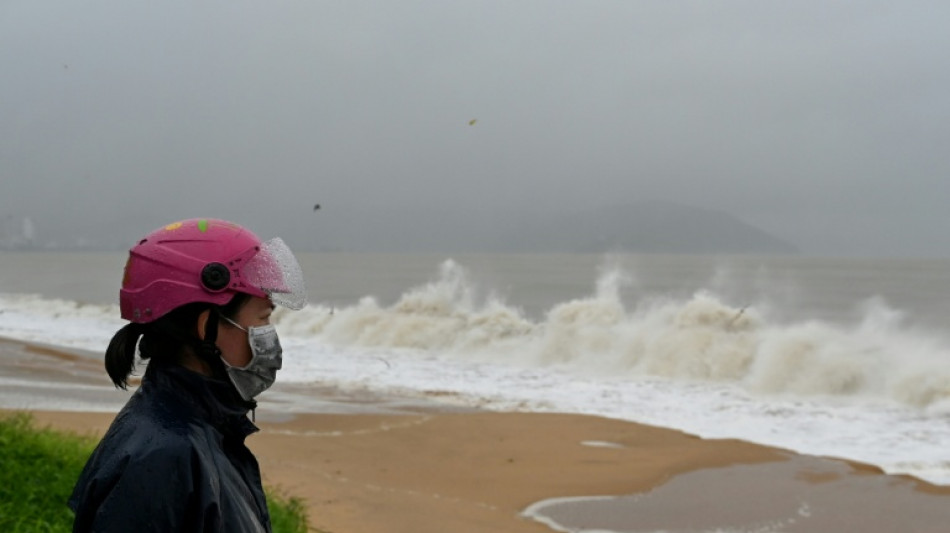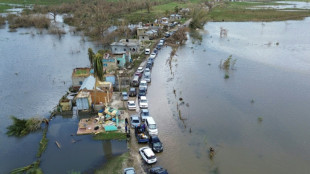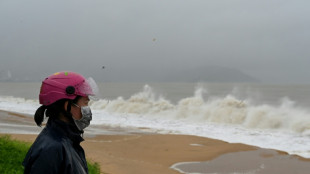

Typhoon Kalmaegi hits Vietnam after killing 140 in Philippines
Typhoon Kalmaegi made landfall Thursday in Vietnam's already storm-battered central belt, where thousands have been evacuated from areas in the path of one of the world's deadliest cyclones this year.
Kalmaegi cut a path of destruction through the Philippines this week, killing at least 140 people and leaving another 127 missing after unleashing devastating floods.
It crashed into central Vietnam late Thursday, packing sustained winds of up to 149 kilometres (92 miles) per hour with much faster gusts, the environment ministry said.
"The wind is so so strong, nothing can resist," Vu Van Hao, 48, told AFP as he surveyed the shards of windows shattered by the storm in the lobby of a hotel in Gia Lai province.
"We here have never experienced such strong wind like this. It's a natural disaster, what can we do?"
The typhoon hit as central Vietnam was still reeling from more than a week of flooding and record rains that killed at least 47 people and submerged centuries-old historic sites.
"This is a huge typhoon with terrible devastating capacity," said Pham Anh Tuan, a top provincial official in Gia Lai, where state media said over 7,000 people had been evacuated as of Wednesday night.
In Gia Lai's coastal area of Quy Nhon Nam, an AFP reporter saw officials knocking doors warning people to flee before the typhoon hit.
Elderly women and children were among dozens of people sheltering Thursday at a school, carrying mats, pillows and blankets.
"I am not young anymore and I don't want to risk my life," said Tran Thi Nghia, 56, who left her one-storey home at the urging of authorities.
Vietnam is in one of the most active tropical cyclone regions on Earth and is typically affected by 10 typhoons or storms a year, but Kalmaegi is set to be the 13th of 2025.
Scientific evidence shows a pattern of human-driven climate change making extreme weather more frequent and destructive.
- 'National calamity' -
Kalmaegi slammed into the central Philippines on Monday, battering the islands of Cebu and Negros before swooping back out to sea.
Floodwaters described as unprecedented rushed through Cebu province's towns and cities, sweeping away cars, riverside shanties and even massive shipping containers.
In Liloan, a town near Cebu City where 35 bodies have been recovered, AFP journalists saw cars piled atop each other by floodwaters and roofs torn off buildings as residents attempted to dig out the mud.
On Thursday, President Ferdinand Marcos declared a "state of national calamity", a move allowing the government to release funding for aid and impose price ceilings on basic necessities.
More than 500,000 Filipinos remain displaced.
- Rushing to leave -
Before the storm hit Vietnam, top leader To Lam said he had cut short a session of the ruling Communist Party's central committee so officials could rush home to areas likely to be affected.
Some residents in the typhoon's path piled onto motorbikes carrying water, clothes and other basic necessities before speeding away from their modest steel-roofed homes.
"I experienced only one huge typhoon in this area my whole life," said a 53-year-old man who gave his name as Thanh, intending to ride out the storm in his concrete home.
"I am only afraid of heavy rains that may bring huge floods," he added, saying he would send his children to stay with relatives.
Schools closed Thursday and Friday in Gia Lai and Quang Ngai provinces and at least five airports were shuttered, authorities said, while dozens of flights have been rerouted.
The heavy rains starting in late October drenched the former imperial capital Hue and the ancient town of Hoi An, both UNESCO-listed sites, turning streets into canals and flooding tens of thousands of homes.
Up to 1.7 metres (5 feet 6 inches) fell over one 24-hour period in a downpour breaking national records.
With more than 3,200 kilometres of coastline and a network of 2,300 rivers, Vietnam faces a high risk of flooding.
Natural disasters have already left 279 people dead or missing this year and caused more than $2 billion in damage, according to Vietnam's national statistics office.
D.Mehra--MT




